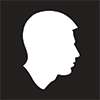Tonight sees the first of three historic live debates between the three main party leaders Gordon Brown, David Cameron and Nick Clegg.
All week I've been doing interviews as to what we should be looking for in the body language of the three as they perform tonight so here is your - Rough Guide to Political Body Language.
Facial Expressions; These are the easiest to control consciously so don't be fooled by the smiles as they take many forms. The sarcastic smile with a slightly twisted mouth isn't a good smile whereas a genuine happy smile reaches from the corners of the mouth to the corners of the eyes.
With a genuine smile you see the teeth, usually top and bottom sets, as there's two muscles that work when we are genuinely happy. The Zygomatic muscle at the corner of the mouth pulls the lips wider and upward opening up the mouth and the Orbicularis Occuli at the sides and just under the bottom eyelid, genuine smiles use both these muscles and the smile is warm, friendly and inviting. So check whether the smiles look genuine.
The Eyes; Can be a dead giveaway too as when under pressure people tend to look downward to gather their thoughts, you'll see this if any of the candidates has to actually start thinking about an answer rather than just giving the stock party line message.
You can also look for something known as "Eye Accessing Cues" this is when you can see the yes moving either up, down or sideways. If you watch closely you will more than likely see a pattern of how when they are asked a question their eyes will shoot to the same position time and time again so when their eyes don't go in the same direction when asked a similar questioon it shows they engaging with it in a different way.
A general rule of thumb and I must stress this is only a general rule as you need to watch someone to really establish their particular pattern, which you can do over 90 minutes of the debate is:
Eyes up to the right engages the left side of the brain which is widely thought of as the analytical side of oour brains so is used when people are gathering their thoughts, putting things in order, weighing up things.
Eyes up left uses the right side of the brain which is said to be where we hold our visual memories. Ask someone about their holiday or who was at XYZ's party and the chances are their eyes with dart up to the left as they recall the picture of those scenes.
Eyes down left is said to be the Audio Internal Dialogue, the conversation you have inside you own head with yourself before you speak so when you're choosing your words carefully.
Eyes down right is supposed to be your "Emotional Channel" where you look when you are empathizing with someone or something.
Hand movements will be a crucial part of tonight's debate as we take a lot of notice of the hands without even realising so here's a qucik reference guide on hands.
Palm open facing upwards is seen as giving, relaxed, informal and open, it engages with people.
Palm down or closed is seen as dominant, controlling and is used when they are firm on things.
Chopping hands cut through issues, double handed chops like a pair of scissors is an absolute "Cut this out" gesture and you may well see this on certain policy areas where the leaders opinions differ greatly.
Pointing finger if directed at someone is very aggressive and we probably won't see any of them using it because it will come across that they've possibly lost the argument and have to resort to finger pointing.
Wide fingers are used when the speaker is trying to appeal to the widest group possible, closed fingers are used when they want to bring you into their way of thinking, often with the hand moving in toward the body as they close.
Precision grips is another area to watch for, this is when the thumb and forefinger are pressed together with the palm of the hand upward the rest of the fingers curled in. This is used when it's a precise point they want you to understand but be aware of when the finger and thumb don't quite touch and there is a slight gap because this would indicate that what they are talking about isn't completely formed yet in their own mind.
Using the lecturn as a prop to bang, hit or stab at with their hands to emphasize their points Gordon Brown uses this a lot during Prime Minsters Question Time each week but only when he's getting angry, which is when the others may use it too.
Body posture and movements, watch how they shuffle from foot to foot, yes they will do this for comfort as you can't stand on the same leg all night, but look when they fidget around whilst answering questions. You all heard the expression "He was too shifty" well this is where it comes from and we tend not to trust people who shift around for no reason.
Also look at whether they are answering the questions to each other, the presenter, the studio
audience or us the viewing public, as this will give you a good indication as to who they want to listen to the answer. Are they just trying to score points or get us involved in understanding their policies.
There you go a rough guide, if you want to learn more about body language check out the ebooks, articles and videos on the rest of my site.
Best regards,
Robert Phipps
PS: I will be on GMTV tomorrow morning and for the next three weeks giving my analysis of the debates if you want to see how your assessment matches up to what I think of their performances.
